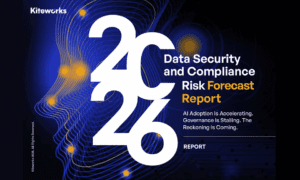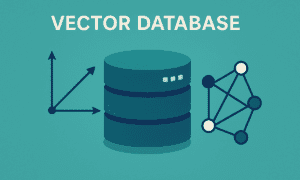Task Prioritization Secrets: 14 Startup Leaders Share Their Methods
Effective task prioritization is a crucial skill for startup founders, but mastering it can be challenging. This article presents practical methods shared by successful entrepreneurs who have honed their prioritization techniques. From blocking calendars to scoring tasks for revenue impact, these expert insights offer valuable strategies for founders looking to optimize their productivity and drive their startups forward.
- Block Your Calendar Before Choosing Tasks
- Rank Tasks by Emotional Impact
- Prioritize Based on Psychological Momentum
- Score Tasks for Revenue and Learner Value
- Focus on One High-Impact Task Weekly
- Filter Tasks by Fundability and Revenue
- Prioritize Revenue-Driving and Fire-Prevention Tasks
- Unblock Team and Move the Needle
- Balance Urgent Tasks with Important Ones
- Align Tasks with Product Roadmap
- Apply Kano Model for Feature Prioritization
- Use 80/20 Rule to Focus Efforts
- Combine Visual Thinking with Structured Frameworks
- Prioritize Using Value-to-Effort Ratio
Block Your Calendar Before Choosing Tasks
‘Block before you pick’
Instead of trying to figure out which tasks to start off with, one smart way to help prioritize tasks is by blocking the calendar for the week. For example, in our line of business, our weekly calendar should look something like this for a specific week: 40% focused on product, 30% on customers, 20% on growth, and 10% on admin.
Once those targets are specified, it is easy to prioritize tasks that fit within those blocks. If it doesn’t fit the blocks, then the tasks can either wait or get delegated. By doing so, prioritization becomes constrained by time. Your calendar helps you show your to-do list by time-blocking your priorities before choosing your tasks.
Ari Bleemer, Co-founder & CEO, OneCrew
Rank Tasks by Emotional Impact
Running CRISPx and launching products for companies like Robosen and Element taught me that the DOSE Method works for prioritization too – I rank every task by its potential to create emotional impact on our target audience.
When we were juggling the Buzz Lightyear robot launch with multiple other projects, I prioritized the app’s dynamic background feature that changed from day to night sky. My team thought it was overkill, but that single detail drove massive social media engagement and contributed to exceeding our pre-order targets.
I use what I call “launch urgency mapping” – tasks get color-coded based on whether they’re pre-launch (red), launch week (orange), or post-launch optimization (green). During the Optimus Prime campaign, this visual system helped us spot that we were spending too much time on post-launch analytics while neglecting pre-launch media outreach.
The biggest productivity shift came from batching similar creative work. I now dedicate Tuesdays exclusively to brand strategy sessions and Thursdays to reviewing design iterations. This eliminated the mental switching costs between analytical and creative thinking that was killing our momentum on complex launches.
Tony Crisp, CEO & Co-Founder, CRISPx
Prioritize Based on Psychological Momentum
Having scaled CC&A from a boutique website firm to a full-service agency since 1999, I learned that psychological urgency mapping trumps traditional to-do lists. I categorize tasks by their psychological impact on client decision-making rather than just business metrics.
The game-changer was when I started prioritizing based on what I call “emotional conversion windows” – the 72-hour period when prospects are most psychologically primed to buy. Instead of randomly following up on leads, I restructured everything around these behavioral triggers. This approach increased our client conversion rate by 40% because we caught people at their peak decision-making moment.
My daily method is brutally simple: I rank every task by how directly it influences human behavior in our sales funnel. Does this email sequence tap into loss aversion? Does this presentation leverage social proof? If a task doesn’t exploit a psychological principle that drives action, it gets pushed to Friday afternoons.
For other founders: stop organizing by “importance” and start organizing by psychological momentum. When I testified as an expert witness for the Maryland Attorney General’s office, I prioritized prep work not by legal complexity but by which arguments would psychologically resonate most with the jury. That mindset shift is what separates successful prioritization from busy work.
Steve Taormino, CEO, Stephen Taormino
Score Tasks for Revenue and Learner Value
A single, repeatable framework keeps priorities crystal-clear in the early-stage chaos. Each Monday, every open task is scored 1-5 for revenue impact and 1-5 for immediacy of learner value, then plotted on a quick two-axis board. Items scoring 4-plus on impact x 3-plus on immediacy jump straight onto the sprint and receive calendar blocks before anything else—even email. The exercise takes ten minutes and reframes the week around outcomes instead of motion.
Since shifting to this matrix, average project turnaround dropped from four weeks to under three, and context-switching fell sharply because the team tackles only three “must-move” items at a time. One piece of advice for founders wrestling with cluttered to-do lists: treat calendar time as capital and allocate it against measurable impact just as rigorously as financial spend.
Arvind Rongala, CEO, Invensis Learning
Focus on One High-Impact Task Weekly
The most effective way I’ve found to prioritize tasks in a startup is ruthless ranking by impact.
Every week, I ask my team one question about every major task or initiative we have: “If we could only accomplish one thing this week that meaningfully moves the business forward, what would it be?”
That simple filter pushes my team to focus on outcomes over busywork. We break that top priority down into clear, small actions so there’s no confusion about what needs to get done first.
This approach improved productivity by killing the noise. In my opinion, startups often drown in good ideas and half-finished projects because they’re all treated as equally important. By forcing prioritization, we built momentum and confidence around executing one impactful thing at a time.
My advice to anyone struggling with prioritization is to embrace constraints. Don’t try to do ten things badly. Instead, choose the one thing that will make everything else easier or less necessary, and pour your energy there until it’s done.
Jeff Mains, Founder and CEO, Champion Leadership Group
Filter Tasks by Fundability and Revenue
I’ve helped thousands of entrepreneurs through Cayenne Consulting, and the most effective prioritization method I’ve found is what I call “Fundability Filtering.” Every task gets evaluated against one question: Does this directly increase our chances of getting funded or generating revenue?
When working with startups, I see founders constantly pulled between product tweaks, networking events, and administrative tasks. The breakthrough comes when they realize that 80% of their time should go to just three things: proving market demand, building investor-ready materials, and generating early revenue. Everything else is noise until you’ve secured your funding or proven your business model.
The data backs this up – our clients who focus exclusively on these core activities are 30% more likely to secure meetings with investors compared to those who scatter their efforts. I had one client who spent weeks perfecting their logo instead of validating their market assumptions. Once they switched to fundability filtering, they closed their seed round in four months.
My advice: Before starting any task, ask “Will this help me raise money or make money in the next 90 days?” If the answer is no, defer it. Most startups die from lack of focus, not lack of features.
Charles Kickham, Managing Director, Cayenne Consulting
Prioritize Revenue-Driving and Fire-Prevention Tasks
As a founder, the reality is that your to-do list will always outpace your time and resources. The most effective way I’ve found to prioritize tasks at Nerdigital is brutally simple: I focus on what directly moves revenue or prevents fires — and everything else gets deferred or delegated.
We use a variation of the ICE framework — Impact, Confidence, Effort. But I add a personal founder filter: “If I only had two hours today, what would I do to either grow revenue or protect the business?” That forces clarity fast.
For example, early on, we had dozens of exciting product ideas, marketing experiments, and operational tasks competing for attention. But we realized nothing mattered more than landing our first few paying clients. So, we paused everything that wasn’t tied to client acquisition. That singular focus helped us sign our first three clients within 60 days — which not only validated the business but gave us breathing room to tackle the rest.
My advice for others struggling with prioritization? Stop treating all tasks as equal. If you’re a founder, your calendar should reflect your business model — revenue, customer relationships, and risk management come first. If it’s not moving the needle on one of those, it’s probably noise.
Max Shak, Founder/CEO, nerDigital
Unblock Team and Move the Needle
At a startup, there’s always too much to do, so we keep it simple:
Will this unblock the team? Will this actually move the needle?
If something’s blocking someone else, we handle it first. Then we go after the highest-impact work, even if it’s not the loudest thing in the room. This mindset helps us keep things moving without getting pulled in every direction.
One tip if you’re stuck on prioritization: Don’t try to do it all. Focus on what helps the team make progress, and be okay with dropping things that just aren’t that important right now.
Dana Brown, Head of Marketing, Shortcut
Balance Urgent Tasks with Important Ones
The “Important but Not Urgent” Trap
By definition, these are the tasks that can wait. And that’s fine — not everything has to be done right now. But if they keep getting pushed aside, over and over, it’s no longer just about prioritization. It’s a signal that something needs attention.
For a company, it might mean we’re stuck in reactive mode — solving today’s issues but never investing in tomorrow. For individuals, it often shows up as fatigue: when even thinking about learning, rest, or growth feels out of reach.
And let’s be honest — without space for those things, real progress becomes almost impossible.
Of course, I’m not saying everything should be slow or easy. Work has its intense moments, and that’s normal. But if important things keep falling off the radar, it’s worth stepping back and asking why.
At launchOptions, we try to protect time and space for what really matters — not just what’s loudest. That means giving ourselves permission to pause, reflect, and work on the things that build long-term strength.
If you find yourself always postponing the meaningful stuff, maybe it’s time to revisit the way your team works — or the expectations you’re carrying. Because sometimes, real progress starts when we finally give the important things the attention they deserve.
Konstantin Yalovik, CEO, launchOptions
Align Tasks with Product Roadmap
The most effective way I’ve found to prioritize tasks is by aligning every activity with our product roadmap and long-term vision. We constantly ask ourselves: Does this task move us closer to launching our core solutions—whether that’s our business plan tool, our upcoming investor marketplace, or the future investment platform? By using this filter, we avoid distractions and stay focused on what truly adds value at each stage of development. This approach has significantly improved our productivity by eliminating time spent on tasks that might seem urgent but aren’t strategically important. For anyone struggling with prioritization, my advice is to establish a clear North Star—your mission or product vision—and let that guide every decision. Without that compass, it’s easy to get lost in busy work that doesn’t actually move the business forward.
Sergey Аtamas, AI Expert | CEO, Growexa
Apply Kano Model for Feature Prioritization
Using the Kano Model for feature prioritization has been crucial in managing tasks at Ascendant Technologies. The key isn’t just categorizing features into Basic Needs, Performance Needs, and Delighters, but also understanding the nuances of these categories. For instance, sometimes what a client thinks is just a basic need might actually have elements of a Delighter if executed with a twist specific to their operations. We focus on meeting basic expectations first because they prevent dissatisfaction. However, we integrate subtle enhancements that the client hasn’t considered, turning a basic expectation into something that surprises them positively, thus acting as a bridge to Performance Needs.
Matthew Franzyshen, Business Development Manager, Ascendant Technologies, Inc.
Use 80/20 Rule to Focus Efforts
I am a person who lives with simplicity and in alignment with the greater good. The 80/20 rule, or the Pareto Principle, is one thing that has been working well for me. I determine the 20 percent of the work which will bring 80 percent of the results. It enables me to sift through the mess and focus on the activities that have a direct impact on the growth and customer satisfaction of the business.
As an example, in one case, we were collaborating with a client to enhance leadership alignment and simplify internal processes. This assisted in the release of time for more strategic operations, such as creating superior customer relationships that were directly proportional to retention.
The tip I would give you in case you face the problem of prioritization is to quit trying to do everything. Discover the few tasks that count and drop the rest. The greatest productivity tool you can employ is focus.
Uku Soot, Organizational Growth Strategist, IPB Partners
Combine Visual Thinking with Structured Frameworks
Setting priorities as a GTM (Go-to-Market) at DualEntry is about ensuring we’re doing the right things to create momentum, not just about getting more done. Depending on my stage, the most successful approach I’ve discovered combines visual thinking with structured frameworks.
TickTick’s Eisenhower Matrix is what I use when I need a clear daily or weekly focus. It provides me with clear boundaries between what is actually urgent and what is just noise. This is particularly useful when managing campaigns, SEO pages, reviews, and product marketing requirements simultaneously. When I need a filter to help me make decisions and things feel chaotic, I turn to it.
However, I frequently begin at a higher level before reaching that point. Whether it’s a content-to-demo funnel or a new G2 page edit, I’ll launch FigJam and lay out the project’s moving components. When I see everything visually, including dependencies, blockers, and flows, I can zoom out and ask, “What will actually move the needle?” It is much simpler to divide it up into prioritized tasks once that is clear.
I would advise against committing to a single system. When you need to focus, use structured tools, but don’t neglect the big-picture mapping. The clarity you seek frequently appears before the to-do list, when you can actually see how everything fits together.
Bruno Bašić, GTM, DualEntry
Prioritize Using Value-to-Effort Ratio
At our software development company, we prioritize tasks by using a value-to-effort ratio. We look at how much business impact a task will deliver versus how much time and resources it demands.
Each week, we map out key initiatives and assign simple scores:
High-impact, low-effort tasks go first.
High-impact, high-effort tasks are broken into smaller, manageable steps.
Low-impact tasks are either delegated or parked for later.
This method has helped us focus on the work that actually moves the business forward instead of getting stuck in reactive mode. It’s improved our team’s productivity and reduced wasted effort.
My advice for others struggling with prioritization: not everything deserves your attention right now. Pick three high-impact tasks and commit to finishing those first. Once they’re done, move to the next set. That discipline can completely change how productive you feel.
Vikrant Bhalodia, Head of Marketing & People Ops, WeblineIndia
Related Articles
- Unlocking Success: The Top Secrets to Succeed as a Technology Startup
- Streamline Your Daily Tasks: Top 10 AI Tools for Productivity
- The Art of Product Prioritization: A Comprehensive Guide for Product



































